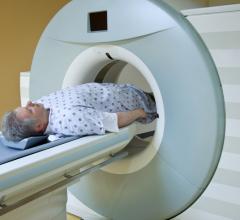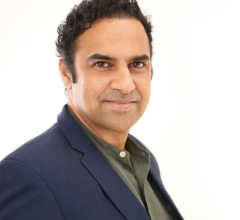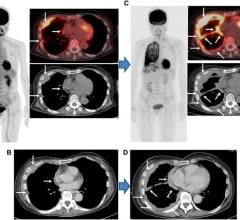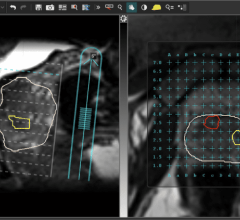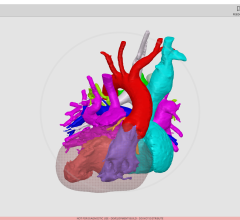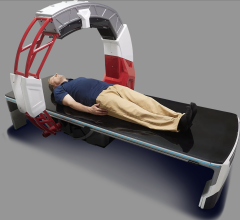October 3, 2013 — Immediate U.S. government furloughs affecting virtually all National Science Foundation (NSF) employees and three-fourths of those at the National Institutes of Health (NIH) could impact U.S. competitiveness, American Association for the Advancement of Science (AAAS) warned.
"If the government shutdown continues for a week or more, it is going to make the United States less desirable as an international research collaborator," said Joanne Carney, director of the AAAS Office of Government Relations. "When funding is no longer reliable, many of our research partners may be unable to continue collaborating with us. That could eventually have longer-term impacts on American innovation and competitiveness."
Although some exceptions exist, the majority of staff and programs at national science agencies will be affected by the congressional stalemate that led to the current shutdown of the federal government.
Furloughs will impact the vast majority of staff at the NSF, for example, except for those directly responsible for the protection of life and property, which likely would include support for the agency's Antarctic research facilities and personnel.
"NSF will be sending notices to research grant awardees, informing them that payments won't be made during the disruption, although research that doesn't require federal employee intervention may proceed," said Matthew Hourihan, director, AAAS Research and Development Budget and Policy Program.
Within the U.S. Department of Health and Human Services, 40,512 employees, or 52 percent, of all staff are expected to be furloughed. At the National Institutes of Health (NIH) in particular, the furloughs will send 73 percent of employees home. Remaining NIH employees will continue to provide both inpatient and outpatient care, but the NIH Clinical Center will not be able to accept new patients.
The U.S. Food and Drug Administration (FDA) will be unable to support the majority of its food safety, nutrition, and cosmetics activities," according to an agency statement. The FDA will also have to cease safety activities such as routine establishment inspections, some compliance and enforcement activities, monitoring of imports, notification programs and the majority of the laboratory research necessary to inform public health decision-making.
The Centers for Disease Control and Prevention (CDC) furloughed all but one person to monitor all disease outbreaks in the Unifted States after the shutdown. However, about 30 CDC employees were recalled to work this week following and outbreak of salmonella.
Most of the 13,814 employees of the U.S. Department of Energy will be furloughed, leaving only a few hundred staff at the National Nuclear Security Administration. "Literally a handful of regular DOE staff would remain on the job within the Office of Science and programs for efficiency, renewables, nuclear power and fossil energy, including ARPA-E, but as contractor entities the labs will be shielded for a time," Hourihan said. The Advanced Research Projects Agency-Energy is responsible for identifying "out-of-the-box" energy solutions not supported by industry research.
The National Aeronautics and Space Administration’s (NASA) shutdown contingency plan ensures support for the International Space Station and its astronauts as well as other satellite missions now under way. NASA will not issue new contracts or grants, however, and most pre-launch development work will end.
Most staff at the National Institute of Food and Agriculture (NIFA) and the Economic Research Service also will be furloughed, Hourihan reported. The only exceptions will be a few hundred employees in charge of research animals and assets such as critical information technology.
Before fiscal year 2013 ended Sept. 30, the White House Office of Management and Budget established an online summary of the contingency plans for most agencies. With Congress unable to agree on how best to appropriate funds for the new fiscal year, most federal science programs and employees lost support as of midnight, Oct. 1. Exceptions included work at the Centers for Medicare and Medicaid Services, including much healthcare reform work in support of the Affordable Care Act, which had polarized budget negotiations on Capitol Hill.
"This doesn't mean all government-funded R&D will cease," Hourihan noted. "Extramural researchers who do not require immediate intervention or oversight from civil servants or are not waiting on disbursal of actual funding may continue their work."
The U.S. debt now stands at 73 percent of the U.S. gross domestic product (GDP), the Congressional Budget Office reported, and it could hit 100 percent by 2038. Federal Research and Development is considered "discretionary spending," and it has accounted for 11 to 12 percent of that category of expenses since the 1980s, Hourihan explained. Discretionary spending overall has been declining as a share of the overall federal budget though, and the CBO has said that discretionary spending will drop to 5.3 percent of the GDP by 2023.
Earlier this year, Hourihan reported that spending cuts mandated by the Budget Control Act, also known as sequestration, had reduced R&D spending for fiscal year 2013 to near 0.8 percent of the GDP — the lowest level seen in 40 years. Under a continuation of the budget sequester, he said, R&D as a share of GDP will likely drop below 0.8 percent for the first time in a long time.
"For years now, elected officials been targeting discretionary spending," Hourihan said. "They have not adequately addressed revenues. They have not adequately addressed entitlement spending. The forces that are driving federal spending and deficits have not been addressed. Once again, the U.S. government shutdown is an example of Congress attacking discretionary spending and the most valuable element of discretionary spending — research and development — without addressing the fundamental budget challenges."
For more information: www.aaas.org, www.hhs.gov, www.energy.gov, www.cbo.gov


 August 09, 2024
August 09, 2024 

